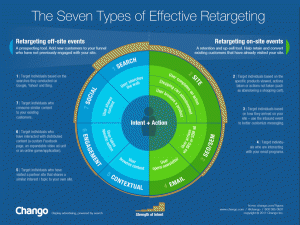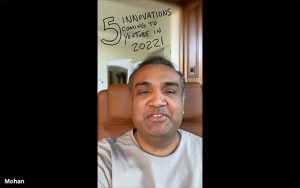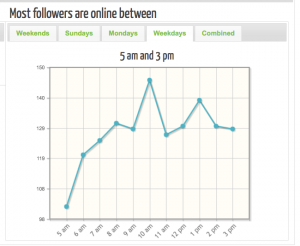In October 2017, advertising via over-the-top media accounted for 26% of total video ad spend, according to a report by video ad serving platform SpotX. That’s certainly a respectable proportion for a relatively new area of media, but the real reason this statistic should have you reading intently is this: in October 2016, OTT accounted for only 8%. In just one year, the proportion spent on OTT has more than tripled, and it’s set to rise again in 2018. OTT is worth sitting up and taking notice of – if you haven’t already.
‘Over the top’ media is, in its most general sense, the streaming of content and media services direct to the consumer over the internet, bypassing the control of telco and broadcast television services providers. OTT communications have been some of the most successful apps for several years now – think of messaging and video call apps like Whatsapp, Skype and WeChat. This kind of OTT allows users to avoid paying text and call charges, a big plus point for international communications in particular, as well as offering a whole host of extra features into the bargain.
Following on from the success of OTT communications, the rise of OTT media streaming services is in many ways the logical next step. If you’ve moved your conversations from landline to messaging app, why should you still pay for a standard cable TV service that doesn’t deliver the programs you want? That, it seems, is exactly what millions of customers are already thinking – more than 49 million homes in the US alone use at least one OTT service.
But what does the popularity of OTT streaming really mean for the app market more generally? The way we watch has changed – and, as a result, so has what we demand from media and services as a whole.
Think about the recent conversations you’ve had about watching movies or shows. Chances are, they’ll include phrases like the examples below. Over the last few years, the rise of streaming has been reflected in changes to how we talk about what we watch, not only in the words and brands names that have become part of our vocabulary (the phrase ‘Netflix and chill’ comes to mind), but also in the way we talk about it:
Then: ‘watching TV’ or ‘watching a movie’ Now: ‘watching Netflix’ or ‘watching Game of Thrones’
| What this really says: | What this really says: |
| 1. Browsing what’s available | 1. Focused on particular shows |
| 2. Based on the television as a device | 2. Based on services rather than devices |
| 3. Generalising about what to watch | 3. Specific to streaming brands |
The new ways in which customers interact with media providers have lead to altered expectations. The only products that achieve success are the ones that keep pace with these changes and deliver what consumers want, and the rise of OTT streaming services is a valuable indicator of what people are prioritizing, valuing, and sharing about apps. Let’s break down those key elements to give three takeaways for apps:
1. Focused on particular shows
More and more people are ‘cutting the cable’ and switching over completely to OTT TV. Whilst the amount of time spent watching traditional cable TV services is falling, the average user is now watching OTT content for 2.2 hours a day, and, what’s more, it’s hitting cable TV where it hurts most, snatching viewers away during primetime hours. Why? One suggestion is that paying cable fees simply doesn’t add up any more, with cheaper subscriptions and free services based on advertising revenue offering attractive alternatives. More appealing than this, however, is the fact that OTT streaming delivers what we’ve come to expect from other online and mobile apps: a personalized experience that knows what we like and delivers it on demand. Viewers are leaving the world of cable where trawling through dozens of channels and the cry ‘there’s nothing on TV!’ is par for the course, in favour of services that will use their previous behaviour to deliver a tailor-made experience.
The takeaway for apps: Get personal, or get canceled
The OTT approach doesn’t just offer the opportunity to target services to individuals: it demands it. With the ability to watch different things to the people sat either side of you rather than battling over the remote control, users have very little patience with services that keep offering them options they just aren’t interested in. Use customer data to target the interactions you have with each individual, increasing customer retention by providing a service that fits them perfectly. Rather than triggering messages or recommendations based on a single user activity, segmenting according to multiple data selections and values builds a fuller and more accurate picture of customer intent.
2. Based on services rather than devices
Whilst plenty of people are watching via smart TVs linked up to Apple TV, Roku or Amazon Fire, plenty of others aren’t watching on a TV at all. With tablets, smartphones and laptops all being popular for streaming, many customers are using multiple devices to engage with their favourite content, and expect their apps to offer a streamlined service no matter where they choose to log in.
This comes with benefits for app engagement: users can interact with the app in a variety of ways, and service notifications or retargeting messages can be used to reach them on multiple platforms. On the other hand, the same opportunities also present the challenge of creating a consistent message and curating your offering to suit every individual on every device.
The takeaway for apps: Be prepared for any device
Being prepared for a multi-device environment where you can (and should) be optimizing user experience across an increasing number of platforms comes down to one thing: integration. If you’re using multiple marketing platforms, ensure that they work together seamlessly, and that the data you’re collecting from users tracks their behaviour across devices. Check that your customer interactions such as push notifications are automatically optimized for each device type, so that no one’s user experience falls short of perfect.
3. Specific to streaming brands
We’re all picky about the brands we spend our money on, from food to fashion, and this now extends to the brands involved in our watching experience too. Whilst Netflix is still the first name many users think of in the streaming world, other OTT providers are hot on its heels, and the major factor that distinguishes these brands is in the content they offer.
The biggest brands in OTT know that content can be what makes or breaks a streaming service, since most users sign up due to the reputation of shows in their selection. In October, Netflix announced plans to spend $ 8 billion dollars on content in 2018. Disney, by contrast, announced in December that they’ll be pulling all their content from Netflix and establishing an OTT service in collaboration with Twenty-First Century Fox, with major draws including Star Wars and the Marvel films.
The takeaway for apps: In the battle of the brands, content is key
Whilst most apps won’t be producing their own big-budget series, the principle of ‘content first’ is clearly worth focusing on. Not only is content often what makes an app unique, it’s also one of the most shareable elements. Think how many people sign up to a streaming service particularly to watch that show that everyone has been talking about. Targeting your content wisely can mean attracting groups of users who might not otherwise have engaged with the app. Whether your content comes in the form of a new retail range, enhanced features or a groundbreaking news article your users will want to read, letting them know about the best of your new content by using tip overlays, in app messages and push notifications helps you stand out in a crowded app market.
Digital & Social Articles on Business 2 Community(58)
Report Post






